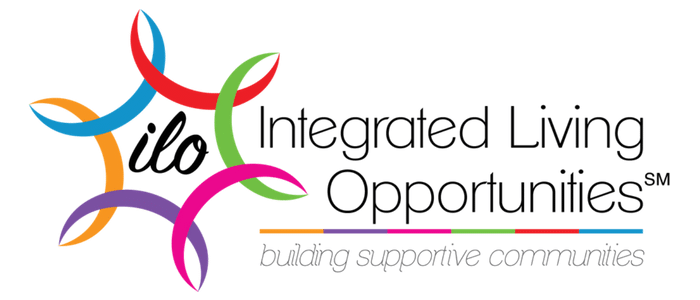Thursday, February 15, 2018
Integrated Living Opportunities (ILO) is an organization dedicated to helping individuals with disabilities (self-advocates) and their families (participating family members) create integrated, inclusive, supported communities in which these self-advocates call live independent, full lives.
Over the last couple of years, we have been hard at work creating these supported communities. We have established community pods in Maryland and Washington, D.C., and we are currently reaching out to begin building communities in Northern Virginia. Through this process, we have been committed to teaching our self-advocates and participating family members that preparing a physical space for independent living is not enough. A community that can surround and support the self-advocate as he or she builds a life is also a necessary part of the process.
In the last year or so, we decided to take our community building philosophies and expand them. We fully understand the importance of community to living a full, independent life. As a result of the importance we place on community, we wanted to offer ILO as a community to individuals that may not be ready to begin actively preparing to live independently. That is why we created ILO Community Group – to provide an opportunity for individuals with disabilities and their families to join the ILO community without committing to full membership. By joining the community group, self-advocates and their family members can begin to create the personal and professional networks of support on which ILO is based, regardless of their independent living readiness.
Today, we would like to take the opportunity to discuss these two ways in which a family of an individual with disabilities can become involved in ILO: as a participating family member, or as a community group member.
What does it mean to be an ILO Community Group member?
The ILO Community Group is a unique, all ages, members-only group that operates within the wider ILO community. This group was created to bring together individuals with disabilities who wish to join the ILO community, but may not be ready to participate in ILO training, or actively prepare for independent living at this time. Members of the ILO Community Group will have access to the Full Life™ Skills Inventory assessment.
Families and individuals with disabilities that join the ILO Community Group will be welcomed into an inclusive, supportive and supported community that facilitates the development of meaningful relationships. They will attend social and recreational events that are organized by the ILO community group, which will provide them with the opportunity to make meaningful connections and build relationships. These networks of support are the cornerstone of ILO’s community building philosophy.
What does it mean to be in ILO as a participating family?
ILO participating families are families that have a self-advocate involved in ILO. Participating families will have taken part in ILO’s two-day training, which helps families understand ILO’s community building philosophy, including concepts of community, community partnership, and the impact of the community builder. All ILO participating families have self-advocates that have or within one year be taking the Full Life™ Skills Inventory Assessment.
As a part of ILO, the participating family and self-advocate will engage with the community builder in their chosen pod. The self-advocate will begin working on independent living skills, and will begin to build relationships that will develop into their personal network of support. Participating families are welcomed to attend ILO events, such as fundraisers, seminars, quarterly pod meetings, and other events. Most importantly, as a participating family member, you are a part of the ILO community.
Would you Like More Information?
Thank you for taking the time to visit our blog today. We hope that we inspired you to reach out to us, and begin creating your own communities – whether that community leads to preparing for independent living, or to a more varied social and recreational life as a member of our community group. More information on how to join as a participating family member can be accessed here – and if you would like to learn more about our community group, please follow this link.
